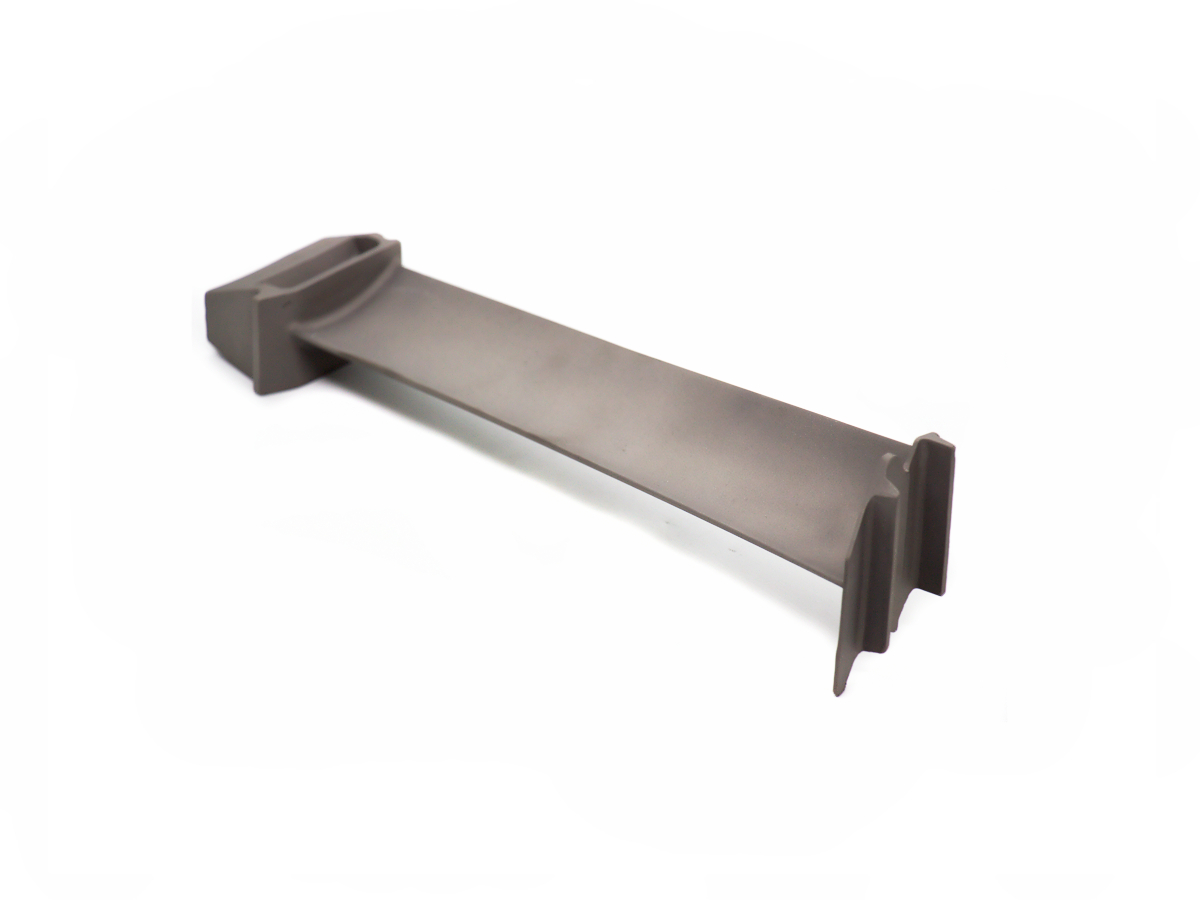Custom CNC Machined Titanium Turbine Blades for Optimal Power Generation Efficiency
Introduction to Custom CNC Machined Titanium Turbine Blades
Turbine blades are critical components in power generation systems, especially in high-efficiency turbines used in gas and steam plants. Titanium CNC machining offers an ideal solution for producing custom turbine blades that need to endure extreme temperatures, mechanical stress, and high rotational speeds. Titanium alloys, such as Ti-6Al-4V, provide excellent strength-to-weight ratios, high resistance to heat, and remarkable fatigue resistance, making them perfect for turbine applications.
Custom CNC machined titanium allows for producing precision turbine blades with intricate geometries and tight tolerances. These high-performance blades help improve power generation efficiency, reduce maintenance requirements, and extend the lifespan of turbines, contributing to the overall efficiency and sustainability of energy production.
Material Performance Comparison for Titanium Turbine Blades
Material | Tensile Strength (MPa) | Thermal Conductivity (W/m·K) | Machinability | Corrosion Resistance | Typical Applications | Advantages |
|---|---|---|---|---|---|---|
900-1100 | 6.7 | Moderate | Excellent | Turbine blades, aerospace components | High strength, excellent fatigue resistance | |
950 | 6.0 | Poor | Excellent | Turbine blades, compressor rotors | Exceptional strength, excellent high-temperature performance | |
1200 | 8.0 | Moderate | Good | High-stress turbine applications | High strength at elevated temperatures | |
950-1050 | 6.0 | Moderate | Excellent | Marine turbine applications | Superior corrosion resistance, lightweight |
Material Selection Strategy for Titanium Turbine Blades
Ti-6Al-4V is one of the most commonly used titanium alloys in turbine blade applications. It offers a tensile strength of 900-1100 MPa and excellent fatigue resistance. This alloy's high strength and resistance to oxidation make it ideal for turbine blades that operate under high mechanical stress and temperatures in power generation systems.
Ti-10V-2Fe-3Al (Grade 19) has a tensile strength of 950 MPa and exceptional high-temperature performance, making it perfect for turbines in gas power plants. It can withstand extreme heat, maintaining its stability and performance over long periods of use.
Ti-3Al-8V-6Cr-4Mo-4Zr (Beta C) is a titanium alloy with excellent strength at elevated temperatures (up to 600°C), making it suitable for high-stress turbine applications. It has a tensile strength of 1200 MPa, making it ideal for high-performance turbines operating under intense conditions.
Ti-5Al-2.5Sn (Grade 6) offers superior corrosion resistance (critical for marine and offshore applications) and excellent tensile strength (950-1050 MPa). This alloy is ideal for applications requiring lightweight parts that can resist the harsh environment of power generation systems in coastal areas.
CNC Machining Processes for Titanium Turbine Blades
CNC Machining Process | Dimensional Accuracy (mm) | Surface Roughness (Ra μm) | Typical Applications | Key Advantages |
|---|---|---|---|---|
±0.005 | 0.2-0.8 | Turbine blades, compressor parts | Complex geometries, high precision | |
±0.005-0.01 | 0.4-1.2 | Shaft components, rotors | Excellent rotational accuracy | |
±0.01-0.02 | 0.8-1.6 | Mounting holes, airfoil ports | Accurate hole placement | |
±0.002-0.005 | 0.1-0.4 | Surface-sensitive components | Superior surface smoothness |
CNC Process Selection Strategy for Titanium Turbine Blades
5-Axis CNC Milling is ideal for manufacturing complex turbine blade geometries, including intricate airfoils and cooling channels. With tight tolerances (±0.005 mm) and fine surface finishes (Ra ≤0.8 µm), this process ensures that turbine blades are optimized for performance, durability, and efficiency in high-performance turbines.
CNC Turning produces cylindrical components like turbine shafts and rotors, providing exceptional rotational accuracy (±0.005 mm). This process ensures smooth and precise parts essential for turbine efficiency and operational stability.
CNC Drilling guarantees accurate hole placement (±0.01 mm), crucial for creating airfoil ports and mounting holes in turbine blades. This process helps in ensuring proper alignment during the assembly of turbine systems.
CNC Grinding is used to achieve exceptionally fine surface finishes (Ra ≤ 0.4 µm) on titanium turbine blades, ensuring smooth surfaces that reduce wear and improve the lifespan of turbine components.
Surface Treatment for Titanium Turbine Blades
Treatment Method | Surface Roughness (Ra μm) | Corrosion Resistance | Hardness (HV) | Applications |
|---|---|---|---|---|
0.4-1.0 | Excellent (>1000 hrs ASTM B117) | 400-600 | Titanium turbine blades, aerospace components | |
0.1-0.4 | Superior (>1000 hrs ASTM B117) | N/A | High-performance turbine blades, aerospace parts | |
0.2-0.6 | Excellent (>800 hrs ASTM B117) | 1000-1200 | Titanium turbine blades, critical rotating components | |
0.2-0.8 | Excellent (>1000 hrs ASTM B117) | N/A | Turbine components, high-temperature seals |
Typical Prototyping Methods
CNC Machining Prototyping: High-precision prototypes (±0.005 mm) for functional testing of titanium turbine blades.
Rapid Molding Prototyping: Fast and accurate prototyping for turbine components such as blades, shafts, and rotors.
3D Printing Prototyping: Quick turnaround prototyping (±0.1 mm accuracy) for initial design validation of titanium components.
Quality Inspection Procedures
CMM Inspection (ISO 10360-2): Dimensional verification of titanium turbine blades with tight tolerances.
Surface Roughness Test (ISO 4287): Ensures the surface quality for high-performance turbine components.
Salt Spray Test (ASTM B117): Verifies corrosion resistance performance of titanium parts in harsh environments.
Visual Inspection (ISO 2859-1, AQL 1.0): Confirms aesthetic and functional quality of titanium components.
ISO 9001:2015 Documentation: Ensures traceability, consistency, and compliance with industry standards.
Industry Applications
Power Generation: Titanium turbine blades, rotor components, high-temperature seals.
Aerospace: Turbine blades, compressor rotors, high-performance parts.
Oil and Gas: Pressure vessels, valve bodies, turbine components.
FAQs:
Why is titanium used for turbine blades in power generation?
How does CNC machining improve the precision of titanium turbine components?
What surface treatments are best for titanium turbine blades?
Which titanium alloys are most suitable for high-performance turbines?
What prototyping methods are best for turbine blades and components?

